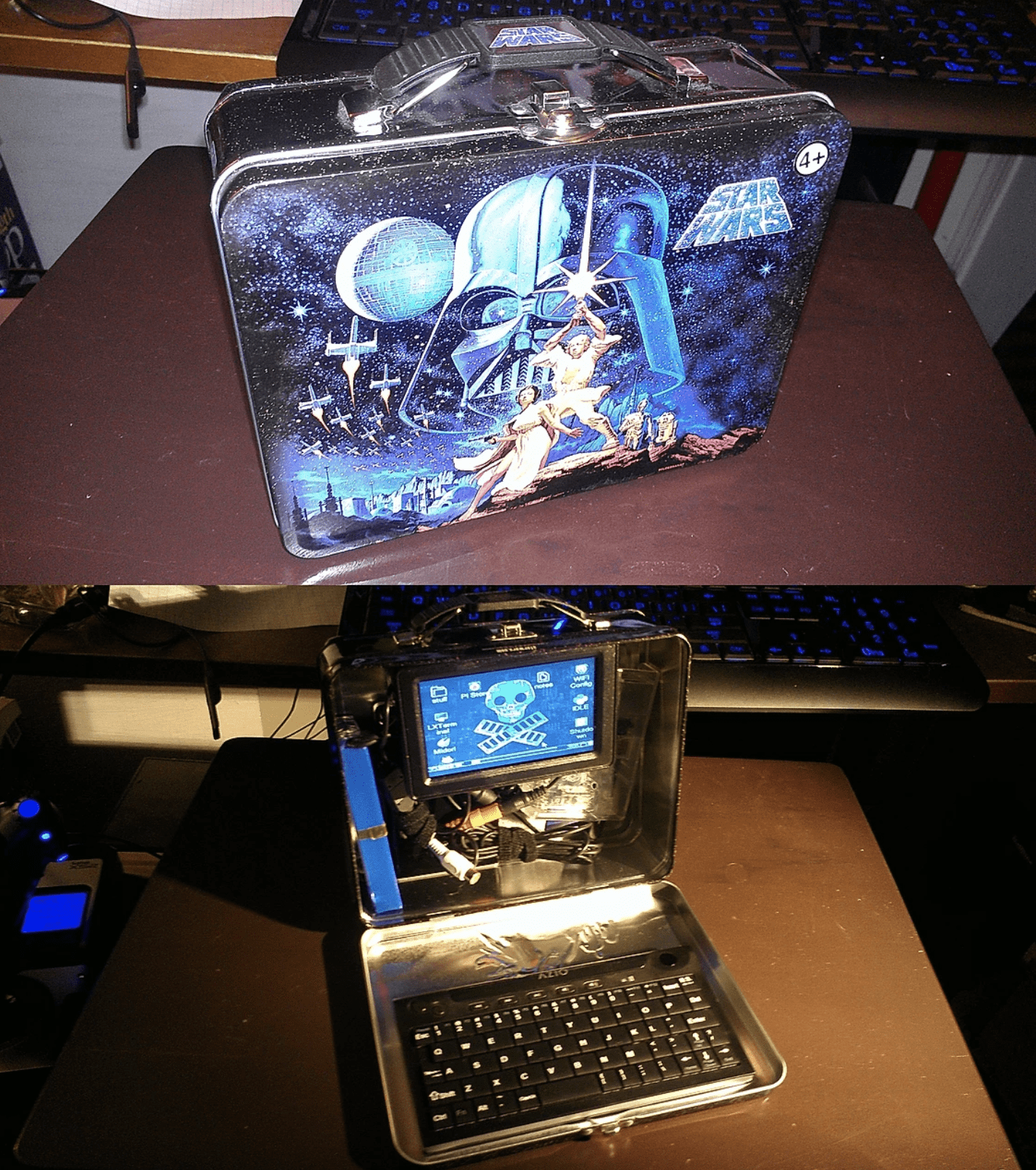A DIY Raspberry Pi Beginner Project
Today we’re going to assemble a portable computer that fits into in a lunch box. It’s a good Raspberry Pi beginner project, since it requires no coding or soldering and little tooling of any kind. All you have to do is acquire the parts, plug everything in and secure it within the lunch box.
While the Raspberry Pi isn’t the fastest machine, it is extremely versatile and easy to use. This lunchbox rig will have all the functionality of a wifi laptop, despite the very small screen.
Raspberry Pi Beginner Project — The Lunchbox Computer
Please note that this project allows for customization and is extremely modular. If you have a spare charging block for your phone, it will probably serve! Feel free to swap out my recommended components, for what you have on hand. This works great for things like batteries and screens. We’ve tried to keep this generalized, as the build is more or less parts in a box!
Feel free to shop around on in thrift stores, electronics bins, yard sales, eBay and Amazon for parts. This is a perfect Frankenstein project! You can find interesting lunchboxes online too, but don’t go carving up a Star Wars original.
Note: Pay attention to the video ports on your Raspberry Pi. Various models have different requirements.

Parts List This project relies on a modular parts list, so plan to add batteries, decline a touchscreen and opt for older components. Metal Lunchbox 10,000 mAh USB Battery Raspberry Pi Model 4 Micro SD Card Clear Raspberry Pi Case Raspberry Pi Touchscreen Display mini Bluetooth Keyboard
Assembly 1. Connect the Raspberry Pi to the screen and the display hat (link). 2. Insert the SD card into the Raspberry Pi. This is your OS and storage. 3. Insert the keyboard dongle. 4. Plug the (charged) battery into the Raspberry Pi.
Once you plug the power into the Raspberry Pi, it will boot up. Check it out, and make sure everything works. You’ll likely need to configure your wifi dongle or change your screen size settings. Your resolutions may be set too high, so don’t feel bad plugging in an external HDMI monitor while you get things going. As usual, I’m not going into detail here, as there are a ton of easy to follow Raspberry Pi tutorials out there which cover those areas.
Once everything is confirmed working, mount everything inside the lunchbox using foam tape. I only used tape on the front edge of the keyboard. This makes it so that I can swing it up to power on and change its batteries. Make sure that you arrange things so you can access and charge the battery pack later. Be sure you can unplug the Pi when you are done using it, since the Pi doesn’t have an on/off switch.
That should cover this installment I think. Good luck and have fun with your lunchbox computer!

